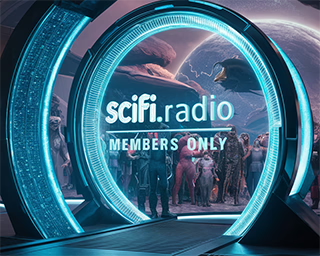Shining like a beacon amidst a sea of distant galaxies, Arp 220 lights up the night sky in this view from the NASA/ESA/CSA James Webb Space Telescope. Credit: NASA, ESA, CSA, STScI, Image Processing: Alyssa Pagan (STScI)
Galaxies collide with the energy of a trillion suns. NASA released a new image Monday of two spiral galaxies in the process of merging 250 million light-years away, in the constellation of Serpens, captured by JWST (James Webb Space Telescope).
NASA says the collision of the two spiral galaxies, officially named “Arp 220,” began about 700 million years ago and sparked an enormous burst of star formation. “It is an ultra-luminous infrared galaxy (ULIRG) with a luminosity of more than a trillion suns,” NASA officials said, making it ideal for the infrared JWST.
“Each of the cores has a rotating, star-forming ring blasting out the dazzling infrared light so apparent in this Webb view. This glaring light creates diffraction spikes — the starburst feature that dominates this image,” NASA explains. When Arp 220’s galaxies began merging, the abundant gas and dust triggered intense star formation, and will continue for billions of years. Over 200 star clusters are packed in the central area just 5,000 light-years across. It contains more star forming material than our entire Milky Way galaxy. Arp 220’s central star-forming ring is seen as six spikes of light near the center of JWST’s image.
Webb isn’t the first to inspect Arp 220. Pictures captured by NASA’s Hubble Space Telescope in 2002 were key to spotting the cores of Arp 220’s galaxies. The space agency’s Chandra X-Ray Observatory also has observed Arp 220, and recorded X-rays blasting out from these centers. Previous radio telescope observations revealed about 100 supernova remnants in an area of less than 500 light-years. The Hubble image reveals reddish dusty and organic clouds near the center of the image. JWST can see through these clouds.

The galaxy cores are very close together now, only 1,200 light years apart. This may help explain why the galaxies have a sudden halt in star forming in the last few million years following the long burst. Another mystery!
A collection of spectacular galaxies colliding is here, 59 images of merging galaxies taken by the Hubble Space Telescope and released on the occasion of its 18th anniversary on 24th April 2008.

As spectactular an event as this is, galactic mergers are pretty common. Astronomers estimate about 25% of galaxies are currently interacting in some way with a neighbor. For example, the Milky Way galaxy will closely approach the Andromeda galaxy in the next four to five billion years, and will merge over a span of 10 billion years into a single giant galaxy.
-30-
![]()
David Raiklen wrote, directed and scored his first film at age 9. He began studying keyboard and composing at age 5. He attended, then taught at UCLA, USC and CalArts. Among his teachers are John Williams and Mel Powel.
He has worked for Fox, Disney and Sprint. David has received numerous awards for his work, including the 2004 American Music Center Award. Dr. Raiklen has composed music and sound design for theater (Death and the Maiden), dance (Russian Ballet), television (Sing Me a Story), cell phone (Spacey Movie), museums (Museum of Tolerance), concert (Violin Sonata ), and film (Appalachian Trail).
His compositions have been performed at the Hollywood Bowl and the first Disney Hall. David Raiken is also host of a successful radio program, Classical Fan Club.











